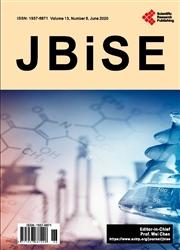Simple, Reliable Isolation, Purification and Cultivation of Murine Skeletal Muscle Microvascular Endothelial Cells
引用次数: 0
Abstract
Objectives: Microvascular dysfunction in skeletal muscle is involved in metabolic and vascular diseases. Microvascular endothelial cells (MEC) are poorly characterized in the progression of associated diseases in part due to lack of availability of MEC from various animal models. The objective was to provide a fast, simple, and efficient method to isolate murine MEC derived from skeletal muscle. Methods: Dissected abdominal skeletal muscles from C57BL/6J mice at 8 - 12 weeks of age were enzymatically dissociated. MEC were isolated using a modified two-step Dynabeads™-based purification method. With a combination of Dynabeads™ - Griffonia simplicifolia lectin-I and Dynabeads™ - monoclonal antibody against CD31/PECAM-1, MEC were isolated and purified twice followed by cultivation. Results: Isolated and purified cells were viable and cultured. MEC were characterized by using immunofluorescence to identify CD31/PECAM-1, an EC marker, and two specific functional assays, which include a capillary-like tube formation and the uptake of Dil-Ac-LDL. The purity of isolated cell populations from skeletal muscle microvessels, which was assessed by flow cytometry, was 88.02% ± 2.99% (n = 6). Conclusions: This method is simple, fast, and highly reproducible for isolating MEC from murine skeletal muscle. The method will enable us to obtain primary cultured MEC from various genetic or diseased murine models, contributing to insightful knowledge of diseases associated with the dysfunction of microvessels.简单、可靠的小鼠骨骼肌微血管内皮细胞的分离、纯化和培养
目的:骨骼肌微血管功能障碍与代谢和血管疾病有关。微血管内皮细胞(MEC)在相关疾病进展中的特征较差,部分原因是缺乏各种动物模型中MEC的可用性。目的是提供一种快速、简单、高效的方法分离小鼠骨骼肌MEC。方法:采用酶解法分离8 ~ 12周龄C57BL/6J小鼠腹部骨骼肌。MEC采用改良的基于Dynabeads™的两步纯化方法分离。结合Dynabeads™- Griffonia simplicifolia凝集素- i和Dynabeads™- CD31/PECAM-1单克隆抗体,分离MEC并纯化两次,然后进行培养。结果:分离纯化后的细胞存活,培养良好。MEC通过免疫荧光鉴定CD31/PECAM-1 (EC标志物)和两项特异性功能测定(包括毛细血管样管形成和Dil-Ac-LDL的摄取)进行表征。流式细胞术检测骨骼肌微血管分离细胞群的纯度为88.02%±2.99% (n = 6)。结论:该方法简便、快速、重复性好,可用于小鼠骨骼肌MEC的分离。该方法将使我们能够从各种遗传或患病小鼠模型中获得原代培养的MEC,有助于深入了解与微血管功能障碍相关的疾病。
本文章由计算机程序翻译,如有差异,请以英文原文为准。
求助全文
约1分钟内获得全文
求助全文

 求助内容:
求助内容: 应助结果提醒方式:
应助结果提醒方式:


